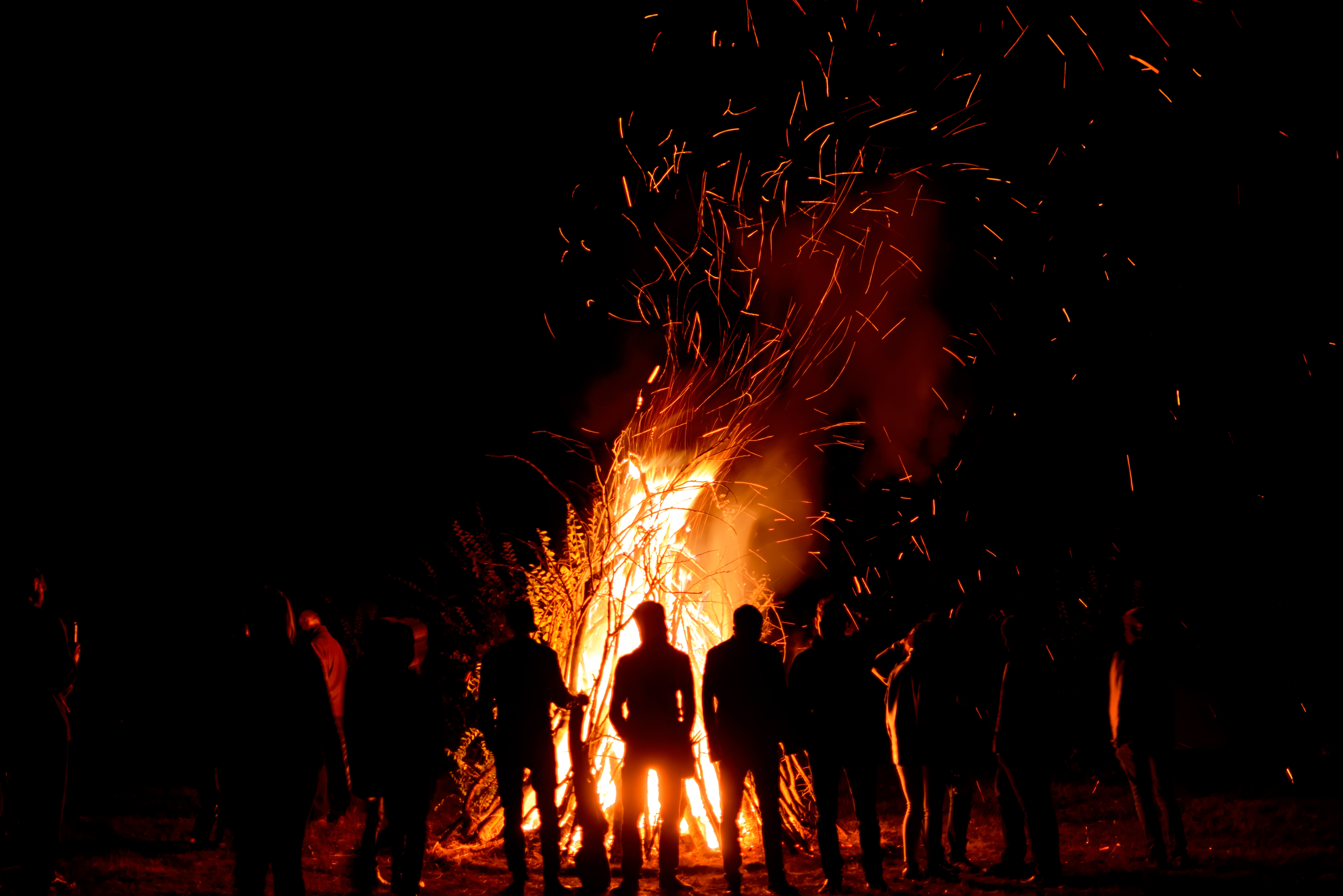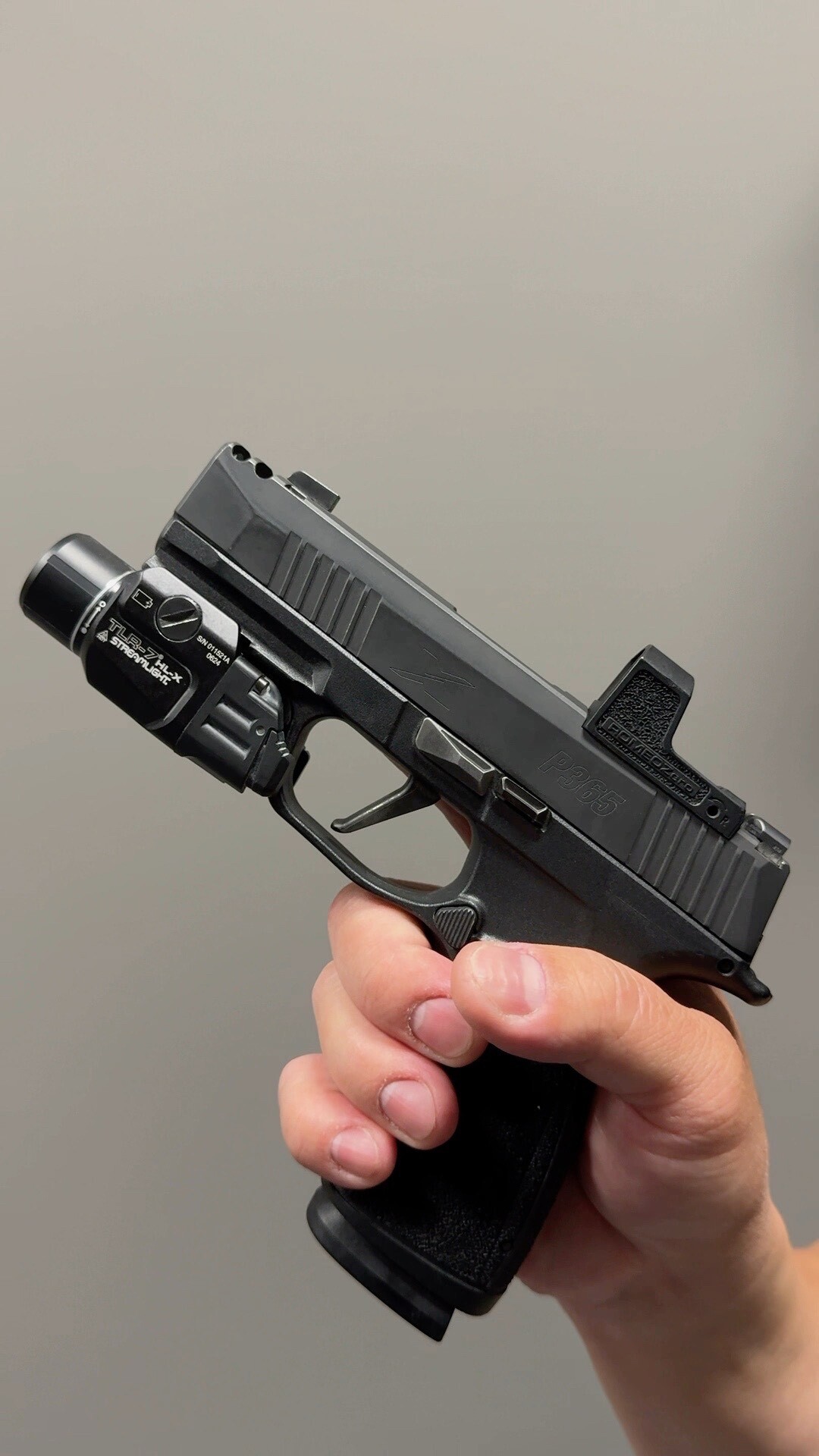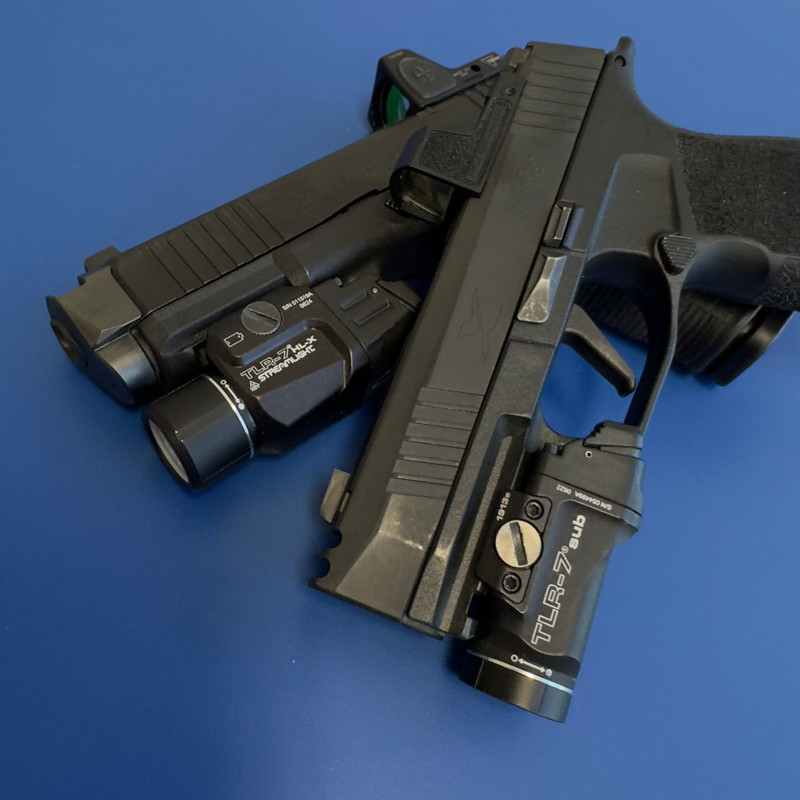For some time now the weapon-mounted light (WML) attachment has become an increasingly indispensable accessory when it comes to everyday concealed carry. A WML enables you to positively identify a potential threat in low-light conditions which will greatly inform a split-second self defense decision. Not only is this a huge benefit tactically, but per the rules of firearm safety if you cannot identify the target and what’s beyond it then shooting in that direction blindly opens you up to enormous legal and moral liability.
The current market for weapon lights come in many shapes and sizes, and it can be hard to know which one is the best for your use case. To ensure you get a light that suits your needs, it is instructive to look at the two metrics by which most lights are generally rated: lumens and candela.
Lumens quantify the perceived output of visible light emitted by a source, basically how bright or luminous something appears to be. For many, this is the key metric for a light and tends to be the first rating highlighted on most packaging. It’s worth noting that, depending on the manufacturer, even though this number can be listed as impressively high, sometimes a lumen rating actually refers to potential output. In practice, any number of environmental factors can and will affect the actual final result.
Candela also rates intensity of light, but measures light power as light emitted in a particular direction. Generally speaking this measures the intensity, reach, or how distant a light can illuminate an area from its source. The more candela you have, the farther away your light can have an effect. When it comes to the application and purpose of a WML, you are typically using your light to quickly evaluate a perceived threat in low or no light. For this reason candela is important because if the reach/penetration of your light is inadequate then not only might you not have sufficient information to pull the trigger but you may also have to step closer to the danger to compensate.

The effectiveness of a light typically requires ample supply and balance of these two units. An extreme example of unsupported lumens might be a bonfire. Up close things are certainly bright and hot but because the light is so unfocused it has difficulty lighting the environment even a relatively short distance away. In more applicable terms, a high lumen rating may reliably produce a desired blinding or disorienting effect on an attacker. But if your candela is low, this affects your ability to “throw” the light into the face of the potential opposition and in close enough proximity may have a more pronounced blinding effect on you, the actual wielder.
On the other extreme end of this spectrum would be something like a laser pointer. The candela on a laser pointer is off the charts, affecting its environment over potentially huge distances. But you will have a hard time lighting up the inside of a coffee mug, let alone an entire room with one. So while candela is critically important on a WML, if the lumens aren’t there then you may not have the effect you require to control the situation.
So with this information it seems sensible to simply shop for the light with the highest values in both of these categories, right? While these numbers are highly important there are a number of factors in the make and manufacture of any WML that may influence your decision.
As an example, let’s examine one of the most popular WML models on the market and amongst the StealthGearUSA staff - the Streamlight TLR-7 HL-X.

This particular model has an innovative multi-fuel system that lets users either use Streamlight’s proprietary SL-B9 rechargeable lithium-ion battery pack or a single CR123A lithium battery, typically available in most stores. If you opt to use a CR123A, the spec sheet promises 500 lumens, 11,000 candela, with an effective range of 210m and a runtime of 1.5 hours. On the other hand, using the SL-B9 provides a seemingly more attractive 1,000 lumens, 22,000 candela at a range of 297m…for thirty minutes.
Therein lies the tradeoff when you start comparing stats of these light platforms. On paper, the SL-B9 battery offers categorically better performance, you just need to be mindful that it can only keep that up for a third of the time of the CR123A.
As an additional comparison, let’s consider the SureFire X300U-A: 1,000 lumens and 11,300 candela, at 1.25 hours over two CR123A batteries. The top end brightness and duration of the TLR-7 HL-X, while having its slightly lower reach and requiring an additional battery. Another thing to consider is that higher performance typically means bigger size lights that you will need to accommodate.
As the technology gets better there is no doubt that WMLs are absolutely on the rise to the point that many of our customers consider them must-haves on their EDC. And when you consider that a WML prevents your handgun from becoming useless or prohibitively dangerous in the dark, it does make for a prudent and sensible precaution. We are constantly developing holster platforms based on feedback and demand from our supporters so check out our Search by Gun directory and see if we have the holster for you.

